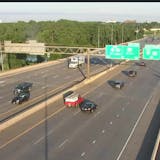Opinion editor's note: Star Tribune Opinion publishes a mix of national and local commentaries online and in print each day. To contribute, click here.
•••
The good news is our community has kept Depression-era levels of hunger at bay by pitching in time and money and building smart policy interventions to fill fridges. But we're not done dealing with the COVID-era hunger surge. Not even close.
A peak when 1 in 8 folks in Minnesota was hungry during the worst of 2020 has declined to 1 in 12. But that's still a whole lot of people — over 480,000 Minnesotans.
If you are part of a softball team, someone you play with is living with hunger. If you're part of a midsize faith community, dozens of your fellow worshipers are living with hunger. There are eight hungry kids on the average full school bus. Stark racial disparities mean these figures are even higher in communities of color.
Hunger's persistent prevalence is uncomfortable for some of us to consider, especially in the heartland, where we have so much food to share. Well-meaning people express gratitude that the crises of COVID-19 and the related surge in hunger are behind us. In Congress, some policymakers want to sunset the emergency programs that kept so many Minnesotans fed and well, having already curtailed enhanced unemployment insurance benefits and additional Child Tax Credit payments.
If we slow down now, we'll lose critical ground. We must continue to put people first to ensure our fellow Minnesotans have access to safe and nutritious food. Hunger-fighting interventions — like SNAP's increased funding and accessibility or the availability of free meals for all Minnesota students — should be kept in place to prevent crises rather than simply respond to them.
In good, rough and in-between times feeding everyone makes our communities stronger, safer, kinder and more able to weather the unexpected.



